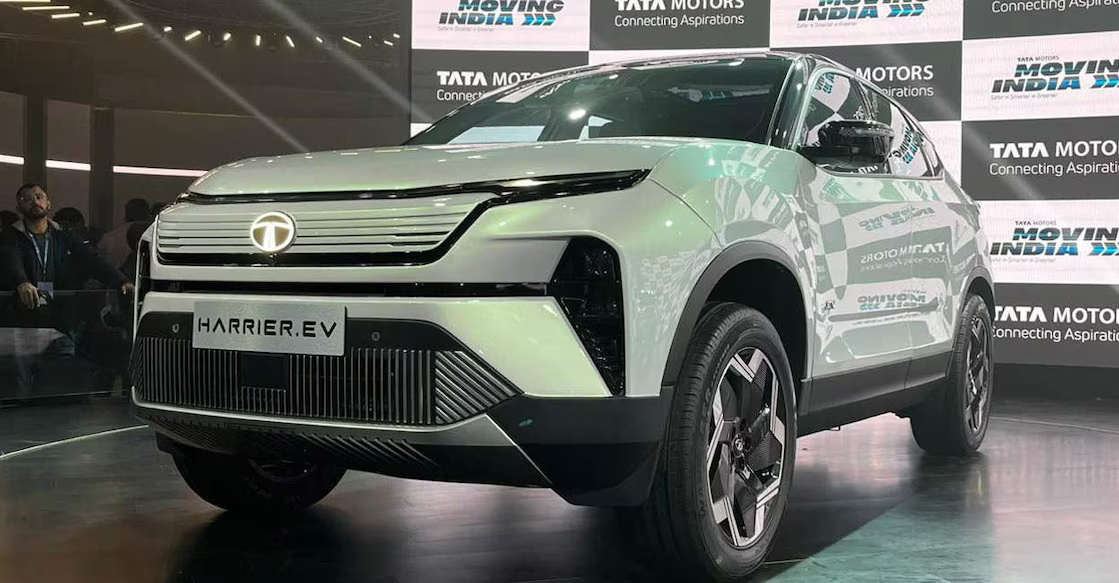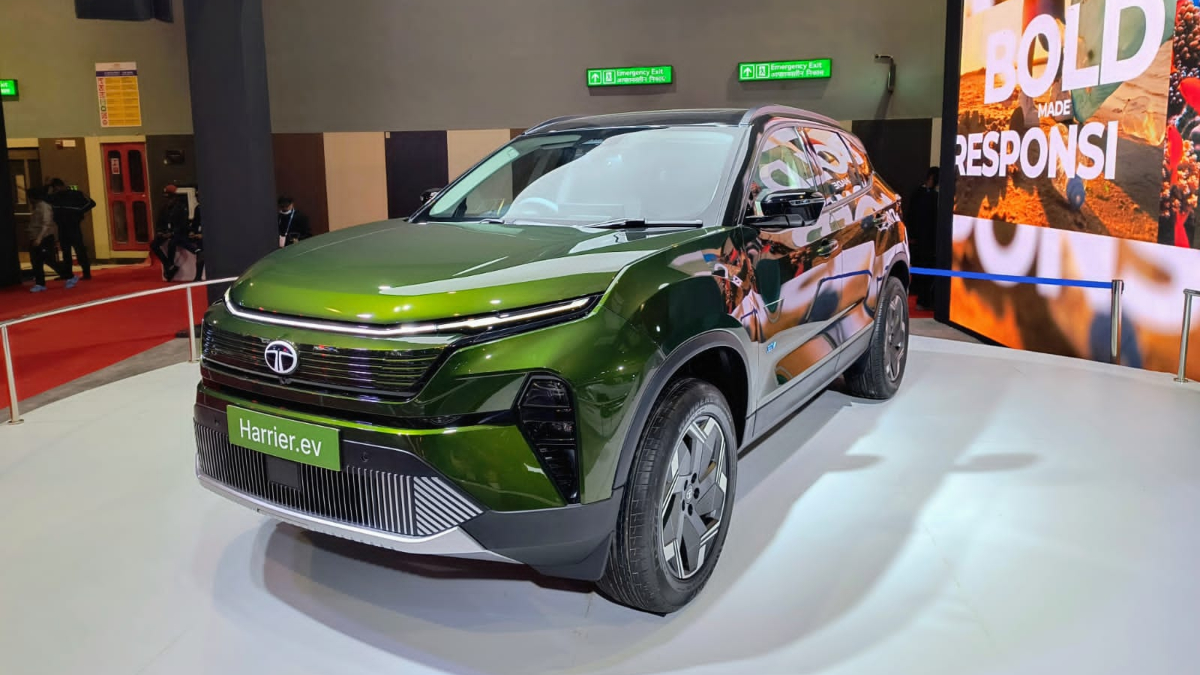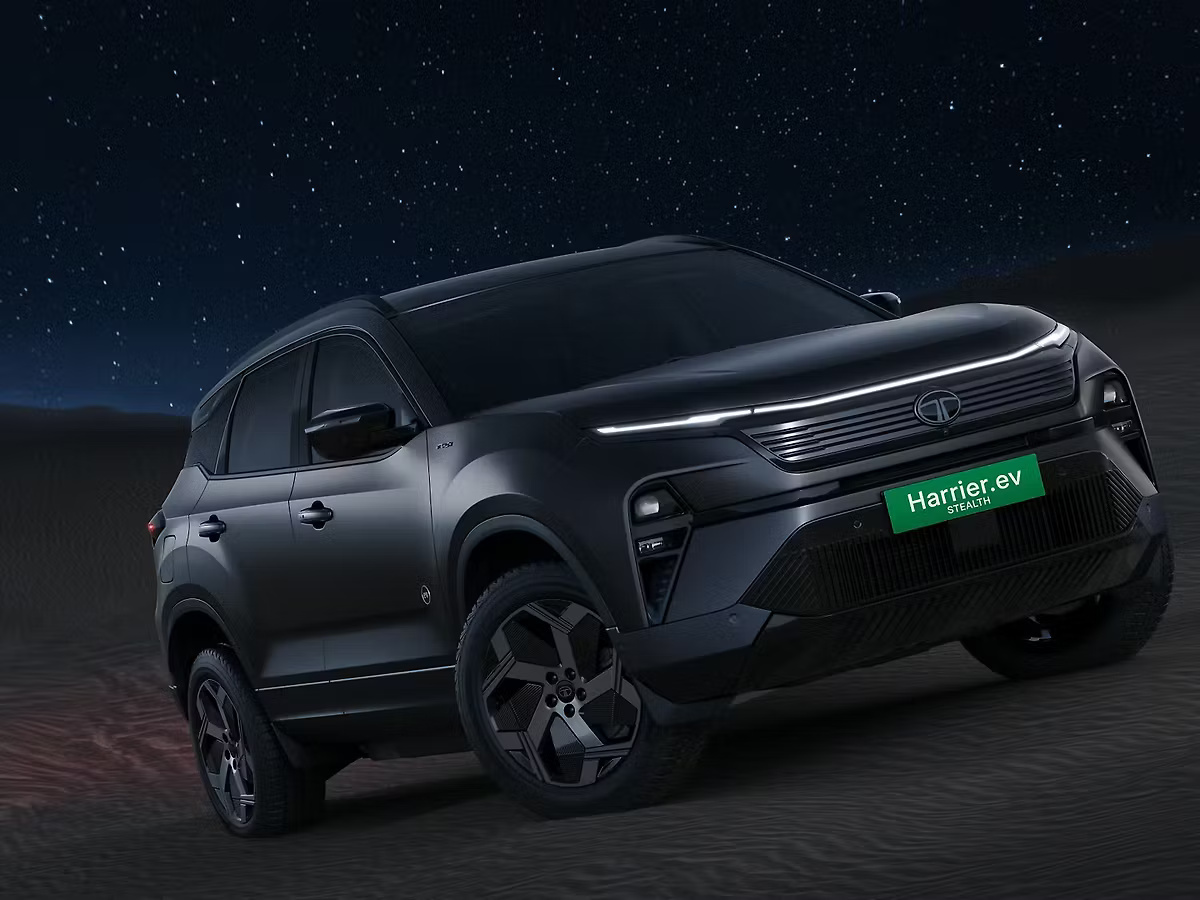The Tata Harrier EV has arrived as India’s most ambitious electric SUV, promising to blend the beloved Harrier’s robust design with cutting-edge electric technology. After extensive real-world testing across varied driving conditions, we’ve uncovered both the remarkable strengths and notable shortcomings of this electric flagship.

With its dual-motor all-wheel-drive system, impressive range claims, and competitive pricing, the Harrier EV positions itself as a serious contender in India’s rapidly evolving electric SUV market. But does it deliver on its bold promises when the rubber meets the road?
Impressive Performance That Delivers on Paper and Pavement
The Harrier EV’s performance credentials are genuinely impressive. The top-spec QWD (Quad Wheel Drive) variant combines a 158hp front motor with a 238hp rear motor, generating a combined output of 396 bhp and 504 Nm of torque. This translates to real-world acceleration that feels both smooth and powerful.
During testing, the Harrier EV consistently delivered its claimed 0-100 km/h sprint in approximately 6.3 seconds. The power delivery remains remarkably linear across all drive modes Eco, City, Sport, and Boost with each offering distinct personality changes that genuinely affect the driving experience.
Highway stability stands out as a particular strength. The SUV maintains composure at high speeds, with minimal wind noise and excellent straight-line stability. The aerodynamic design contributes not just to efficiency but also to confident high-speed cruising.
The all-wheel-drive system provides the Harrier EV with a unique advantage in its segment. Unlike most electric SUVs that rely on front or rear-wheel drive, the Harrier EV’s AWD setup offers genuine traction benefits on challenging terrain and adverse weather conditions.
Real-World Range: The Reality Check
Range anxiety remains a primary concern for electric vehicle buyers, making real-world testing crucial. The Harrier EV offers two battery options: a 65 kWh pack with a claimed 538 km range, and a 75 kWh pack promising up to 622 km on a single charge.
In mixed driving conditions that included city traffic, highway cruising, and suburban routes, the 75 kWh variant consistently delivered between 414-436 km of real-world range. This represents roughly 70% of the claimed ARAI figure a realistic expectation for most electric vehicles.
Highway-focused driving yielded an efficiency of approximately 5.81 km/kWh, which is competitive for an SUV of this size and weight. City driving, with its frequent stop-start traffic, naturally reduced overall efficiency but still provided adequate range for most daily usage scenarios.
For the majority of buyers, a practical range of 400-450 km means the Harrier EV can handle intercity journeys comfortably while providing several days of urban commuting on a single charge.

Fast Charging That Actually Works
Charging infrastructure and speed remain critical factors for electric vehicle adoption. The Harrier EV supports 120 kW DC fast charging, enabling 20-80% battery replenishment in just 25 minutes under ideal conditions.
This charging speed makes long-distance travel genuinely practical. During testing, the fast charging performance remained consistent, with minimal degradation in charging speed until the battery reached approximately 75% capacity.
The 7.2 kW AC charging option provides a complete 10-100% charge in roughly 10.7 hours, making overnight charging at home a viable option for most users.
Design and Build Quality: Familiar Yet Fresh
The Harrier EV retains the robust, commanding presence that made the original Harrier popular while incorporating subtle EV-specific design elements. The result is a vehicle that looks purposeful without appearing overly futuristic.
A standout practical feature is the frunk (front trunk), offering 35L of additional storage in the AWD variant and 67L in the RWD version. This bonus storage space addresses a common complaint about electric vehicles lacking adequate cargo capacity.
The interior maintains the premium feel expected from Tata’s flagship SUV, with quality materials and improved fit-and-finish over the ICE Harrier. The cabin feels spacious and well-appointed, with thoughtful storage solutions throughout.
Technology That Impresses and Occasionally Frustrates
The Harrier EV’s technology suite is comprehensive, featuring Level 2 ADAS, a 540-degree camera system, digital key functionality, and remote park assist with summon mode. The 14.53-inch Samsung QLED infotainment display provides crisp visuals and responsive touch inputs most of the time.
However, software refinement remains an area for improvement. During extended testing, we encountered occasional touchscreen lag, random warning lights in the digital display, and inconsistent performance from the summon mode feature. The 360-degree camera system, while functional, suffers from somewhat choppy image quality that could benefit from higher resolution.
These issues are likely addressable through over-the-air updates, but they highlight the challenges of integrating complex software systems in vehicles.
Areas That Need Attention
Despite its many strengths, the Harrier EV has some notable shortcomings that potential buyers should consider.
The brake pedal feel stands out as the most significant concern. The brakes feel spongy and lack the immediate bite expected from a vehicle of this weight and performance capability. While the four-level regenerative braking system works effectively, the traditional friction brakes require more pressure than intuitive for confident stopping.
Body roll, while well-controlled for an SUV of this size, becomes noticeable during spirited cornering. This isn’t unusual for a tall, heavy electric SUV, but it’s worth noting for buyers expecting sports car-like handling dynamics.
The service ecosystem for electric vehicles, particularly in smaller cities, remains a concern. While Tata’s service network is extensive, EV-specific expertise and parts availability may vary significantly across locations.
Pricing and Value Proposition
The Harrier EV’s pricing strategy is aggressive and appealing. Starting at ₹21.49 lakh for the base Adventure 65 variant and topping out at ₹29.74 lakh for the flagship Empowered QWD 75 Stealth, it undercuts several competitors while offering more features and capabilities.
The inclusion of a lifetime battery warranty adds significant value and peace of mind for potential buyers concerned about long-term ownership costs.
Who Should Consider the Harrier EV?

The Harrier EV makes the most sense for buyers who prioritize performance, range, and features while accepting some software refinement issues. It’s particularly appealing for those who want all-wheel-drive capability in an electric SUV a rare combination in this price segment.
Buyers who frequently undertake long-distance travel will appreciate the genuine 400+ km real-world range and fast charging capabilities. The comprehensive feature set makes it suitable for technology enthusiasts who want the latest automotive innovations.
However, buyers who prioritize refined software experiences or those in areas with limited EV service infrastructure might want to wait for software updates or consider alternatives.
FAQs About TATA Harrier EV 2025
Q1. What is the real-world range of the Tata Harrier EV?
The Tata Harrier EV offers an estimated real-world range of around 400-450 km, depending on driving conditions, terrain, and driving style.
Q2. How long does it take to charge the Harrier EV?
The charging time varies based on the charging method. Using a DC fast charger, the Harrier EV can charge up to 80% in approximately 50 minutes, while a standard home charger may take 8-10 hours for a full charge.
Q3. What are the standout features of the Tata Harrier EV?
The Harrier EV is equipped with advanced features, including a large touchscreen infotainment system, connected car technology, ADAS (Advanced Driver Assistance Systems), and a spacious, premium interior.
Q4. Is the Tata Harrier EV suitable for long drives?
Yes, with its impressive range and robust performance, the Harrier EV is well-suited for long drives. The growing charging infrastructure also makes cross-country travel more feasible.
Q5. What is the expected price of the Tata Harrier EV?
The anticipated price of the Tata Harrier EV is expected to be in the range of ₹25 to ₹30 lakhs, making it competitive in its segment.
The Verdict: A Strong Foundation with Room to Grow
The Tata Harrier EV represents a significant achievement in India’s electric vehicle development. It successfully translates the Harrier’s appeal into electric form while adding meaningful improvements in performance, features, and efficiency.
The combination of strong real-world range, impressive performance, comprehensive features, and competitive pricing creates a compelling package. While software refinement and brake feel need attention, these issues don’t fundamentally undermine the vehicle’s core strengths.
For buyers ready to embrace electric mobility without compromising on space, performance, or features, the Harrier EV offers a genuinely attractive proposition. It’s not perfect, but it’s a substantial step forward in making electric SUVs practical and desirable for Indian buyers.
The Harrier EV proves that Indian manufacturers can create electric vehicles that compete on global standards while addressing local needs and preferences. As software updates address current issues and the charging infrastructure continues expanding, the Harrier EV’s appeal will likely grow even stronger.
For More Information Click HERE
